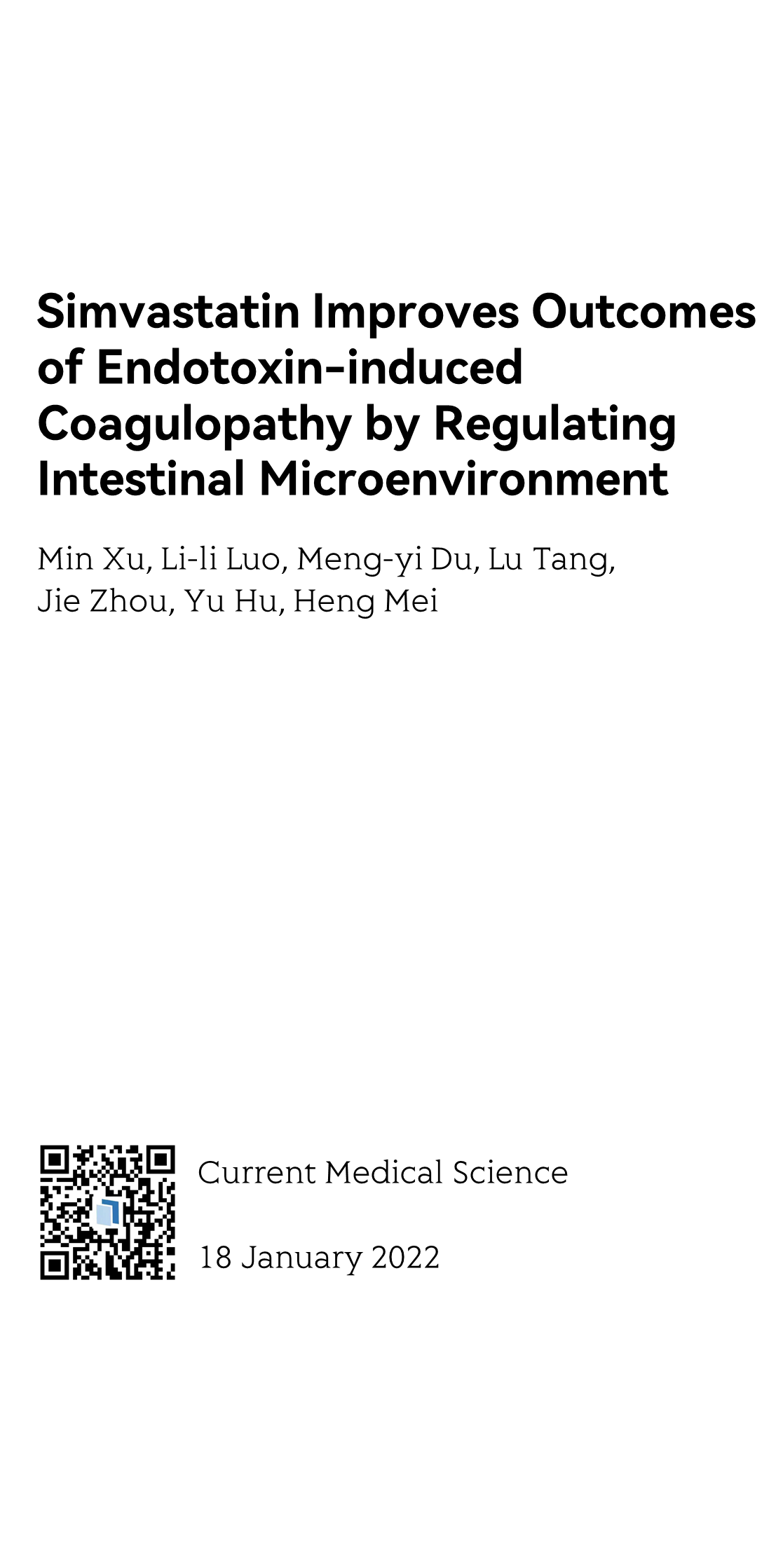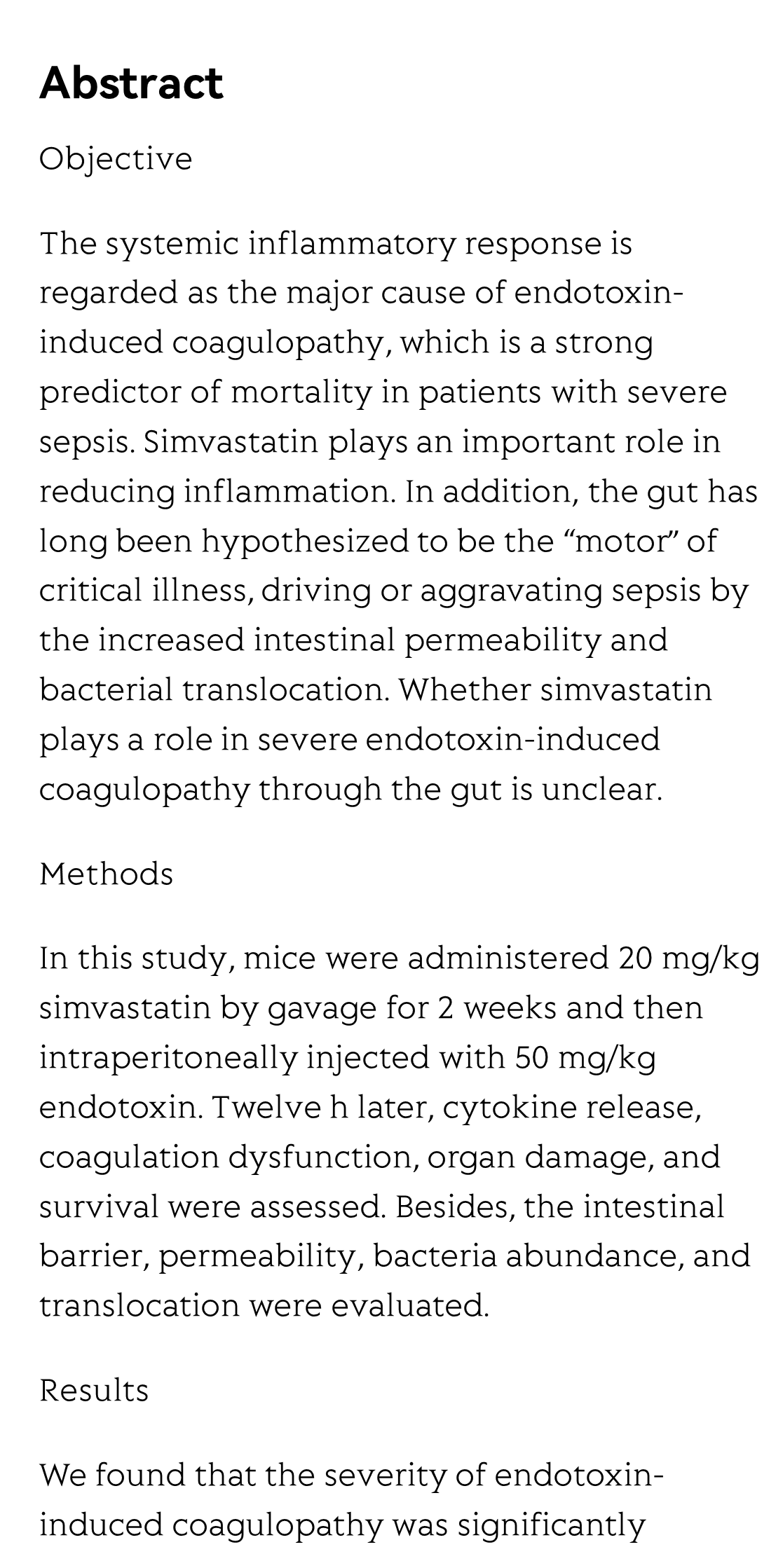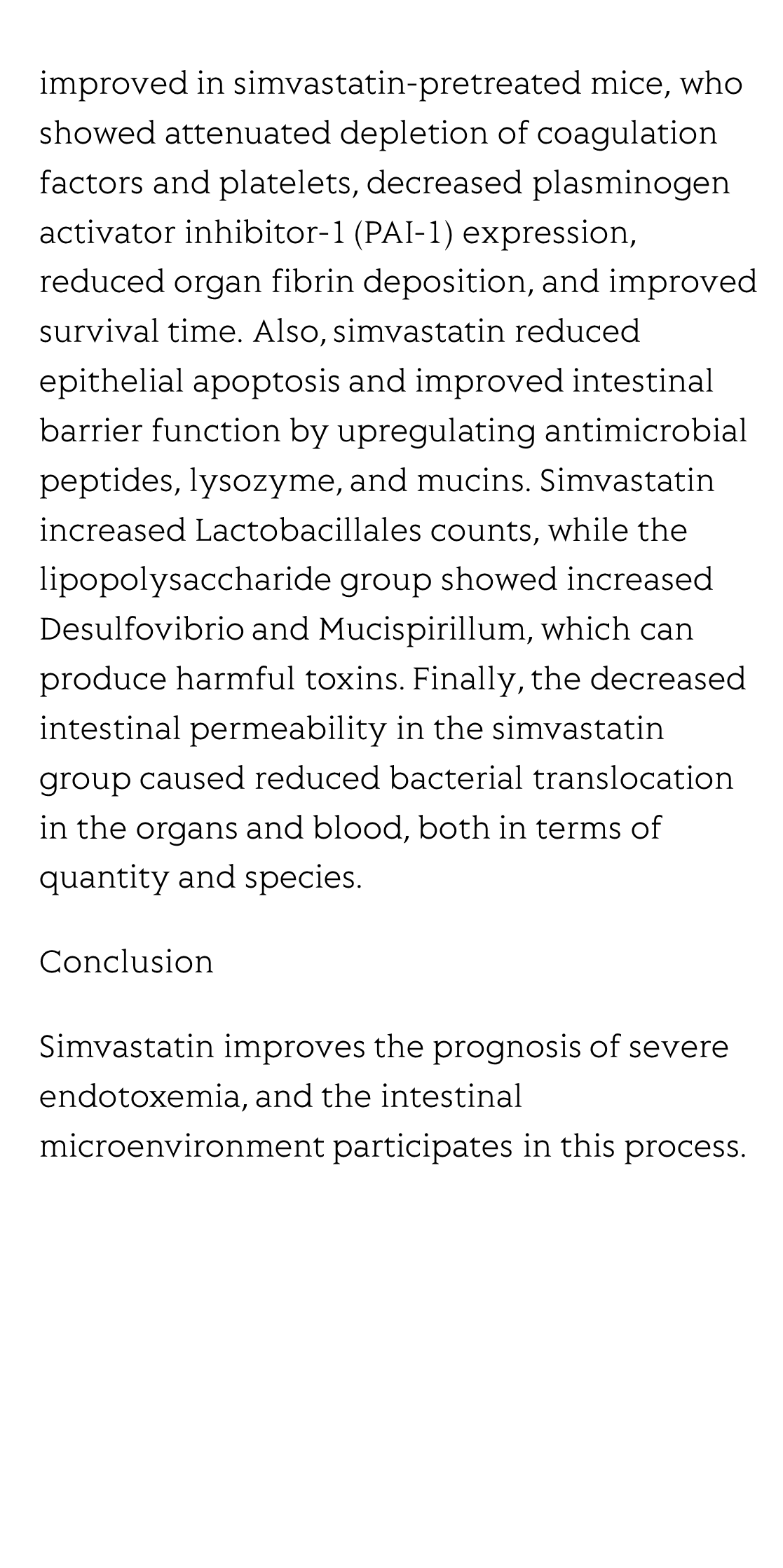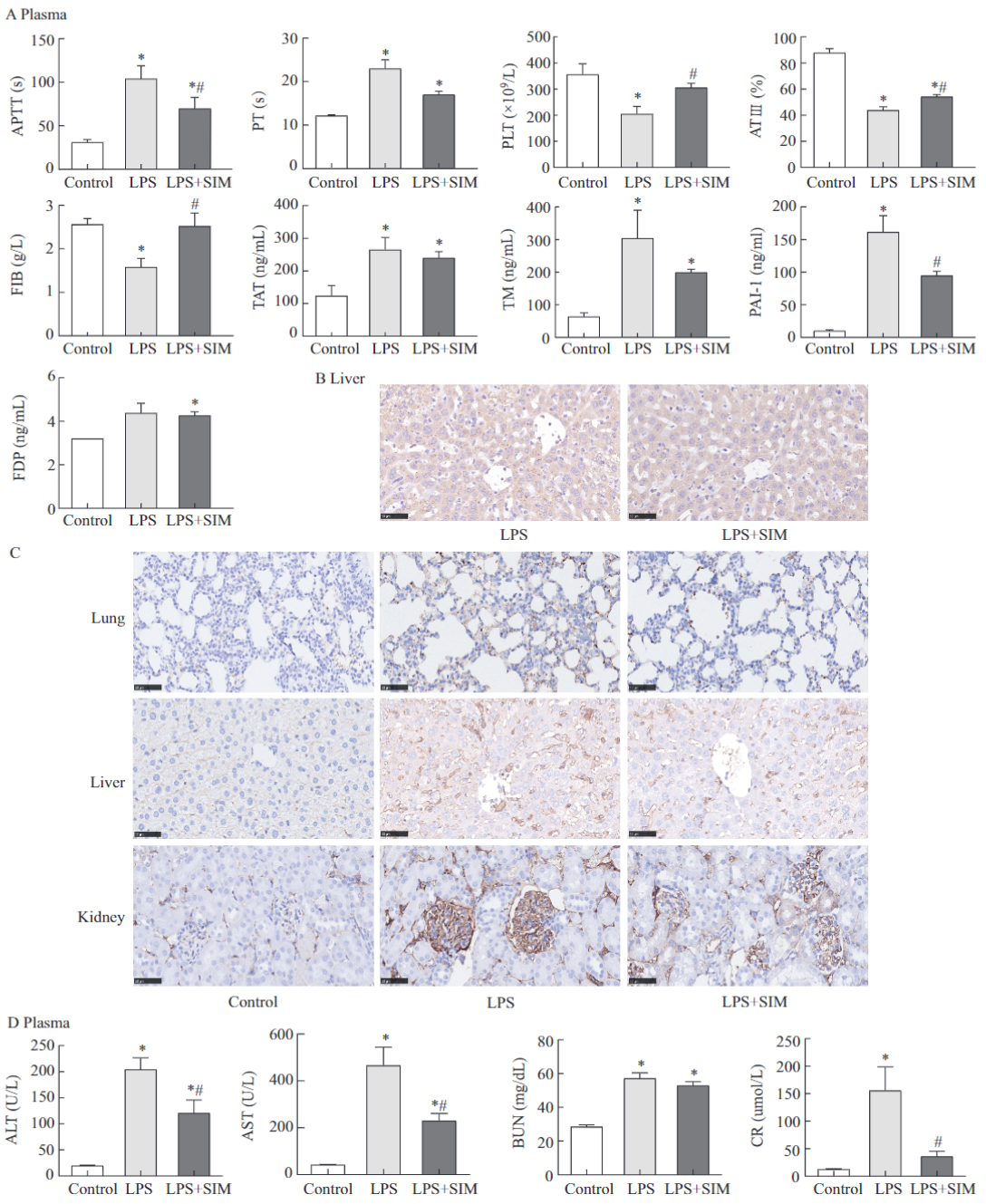(Peer-Reviewed) Simvastatin Improves Outcomes of Endotoxin-induced Coagulopathy by Regulating Intestinal Microenvironment
Min Xu 徐敏 ¹, Li-li Luo 罗丽丽 ¹, Meng-yi Du 都孟仪 ¹, Lu Tang 唐露 ¹, Jie Zhou ¹, Yu Hu 胡豫 ¹ ² ³, Heng Mei 梅恒 ¹ ² ³
¹ Institute of Hematology, Union Hospital, Tongji Medical College, Huazhong University of Science and Technology, Wuhan, 430022, China
中国 武汉 华中科技大学同济医学院附属协和医院 血液病研究所
² Hubei Clinical and Research Center of Thrombosis and Hemostasis, Wuhan, 430022, China
中国 武汉 湖北省血栓与止血医学临床研究中心
³ Collaborative Innovation Center of Hematology, Huazhong University of Science and Technology, Wuhan, 430022, China
中国 武汉 华中科技大学血液学协同创新中心
Objective
The systemic inflammatory response is regarded as the major cause of endotoxin-induced coagulopathy, which is a strong predictor of mortality in patients with severe sepsis. Simvastatin plays an important role in reducing inflammation. In addition, the gut has long been hypothesized to be the “motor” of critical illness, driving or aggravating sepsis by the increased intestinal permeability and bacterial translocation. Whether simvastatin plays a role in severe endotoxin-induced coagulopathy through the gut is unclear.
Methods
In this study, mice were administered 20 mg/kg simvastatin by gavage for 2 weeks and then intraperitoneally injected with 50 mg/kg endotoxin. Twelve h later, cytokine release, coagulation dysfunction, organ damage, and survival were assessed. Besides, the intestinal barrier, permeability, bacteria abundance, and translocation were evaluated.
Results
We found that the severity of endotoxin-induced coagulopathy was significantly improved in simvastatin-pretreated mice, who showed attenuated depletion of coagulation factors and platelets, decreased plasminogen activator inhibitor-1 (PAI-1) expression, reduced organ fibrin deposition, and improved survival time. Also, simvastatin reduced epithelial apoptosis and improved intestinal barrier function by upregulating antimicrobial peptides, lysozyme, and mucins. Simvastatin increased Lactobacillales counts, while the lipopolysaccharide group showed increased Desulfovibrio and Mucispirillum, which can produce harmful toxins. Finally, the decreased intestinal permeability in the simvastatin group caused reduced bacterial translocation in the organs and blood, both in terms of quantity and species.
Conclusion
Simvastatin improves the prognosis of severe endotoxemia, and the intestinal microenvironment participates in this process.
Flicker minimization in power-saving displays enabled by measurement of difference in flexoelectric coefficients and displacement-current in positive dielectric anisotropy liquid crystals
Junho Jung, HaYoung Jung, GyuRi Choi, HanByeol Park, Sun-Mi Park, Ki-Sun Kwon, Heui-Seok Jin, Dong-Jin Lee, Hoon Jeong, JeongKi Park, Byeong Koo Kim, Seung Hee Lee, MinSu Kim
Opto-Electronic Advances
2025-09-25
Dual-frequency angular-multiplexed fringe projection profilometry with deep learning: breaking hardware limits for ultra-high-speed 3D imaging
Wenwu Chen, Yifan Liu, Shijie Feng, Wei Yin, Jiaming Qian, Yixuan Li, Hang Zhang, Maciej Trusiak, Malgorzata Kujawinska, Qian Chen, Chao Zuo
Opto-Electronic Advances
2025-09-25







